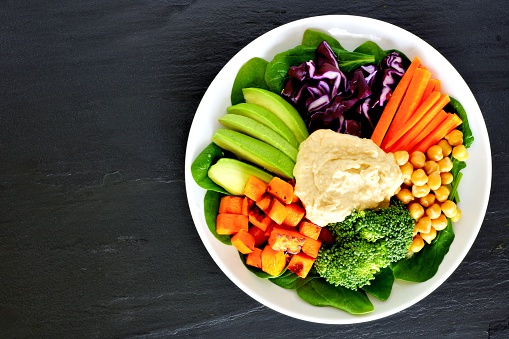Photographs on Instagram go beyond showing off your abs, or your new cool haircut. Besides looking at an array of sexy selfies, we now see people constantly posting pictures of their lunches, particularly macro bowls. Aside from creating a wonderful and visually appealing meal idea, bowls are becoming a very trendy option in many health focused restaurants throughout the country, and amongst the health conscious.
LIKE DailyVitamina.com on Facebook! Get Your Daily Vitamin…FOR LIFE!
Why eat your meal out a bowl?
The idea of eating your meal out of a bowl is based on the macro bowl, which in turn was inspired by a discipline called Macrobiotics, a healthy way of eating based on Japanese principles and Chinese medicine, and it has gained popularity especially in large cities such as New York and Los Angeles. The Macrobiotic Diet provided some of the principles to many dietary trends such as vegetarian, South Beach, and even Paleo.
What is Macrobiotics and the Macrobiotic Diet?
The philosophy behind Macrobiotics is for people to balance themselves with the natural world through food. According to this Japanese tradition, each meal is a combination of grains, vegetables, beans or fish, and fermented foods. Furthermore, macrobiotics teaches that eating any processed food moves us further from this sought balance. The idea of serving a meal in a bowl is just for the convenience purposes.
What makes up a macro-bowl?
There is no exact way to create a macro-bowl. The idea is to ensure that your meal is versatile. Here are some suggested portions for a balanced macrobiotic bowl:
1. Start with a whole grain which makes up about 20 to 30 percent of your plate. You can use quinoa, brown rice, or millet for example. You may also swap the grains and include noodles instead like buckwheat soba or udon noodles.
2. Vegetables can make up about 40 to 60 percent of your plate or bowl. Within this group it is recommended to include all three categories of vegetables—round (like onions or squash), leafy (like kale), and root veggies. The vegetables can be prepared in either one of two ways : cooked quickly via steaming or sautéing, and cooked longer, like stewing.
3. Beans, soy protein, and sea vegetables should make up about 5 to 10 percent of your bowl. Some good options can be either tempeh or tofu. Sea vegetables include nori, hiziki, a wild Maine kelp, and dulse. These categories are generally overlooked but can be a valuable source of nutrients.
4. It’s important to also include fermented foods, like naturally fermented pickles, which contain probiotics.
5. You can also make your macro bowl into a soup. You could consider adding miso soup or kombu soup broth to your macro bowl to create a stew.
The important point to remember is that your macro bowls are not only visually appealing, they are a very nutritious and trendy way to eat healthy.
Macro bowl recipe
1/2 lb. extra-firm tofu, drained, pressed, and cubed
1 Tbsp. olive oil
1 Tbsp. soy sauce
Pinch of basil
Pinch of oregano
1 cup cooked brown rice
1 Tbsp. miso paste
1/2 bunch broccoli, cut into florets and steamed
1/2 cooked sweet potato, diced
1 large carrot, shredded
1 tsp. sauerkraut
1 tsp. pickled ginger (optional)
Combine the tofu, olive oil, soy sauce, basil, and oregano in a pan and cook on medium heat until the tofu is browned. Mix the cooked brown rice and miso paste together in a medium-sized bowl. Add the tofu mixture, broccoli, sweet potato, carrot, sauerkraut, and pickled ginger and enjoy!
